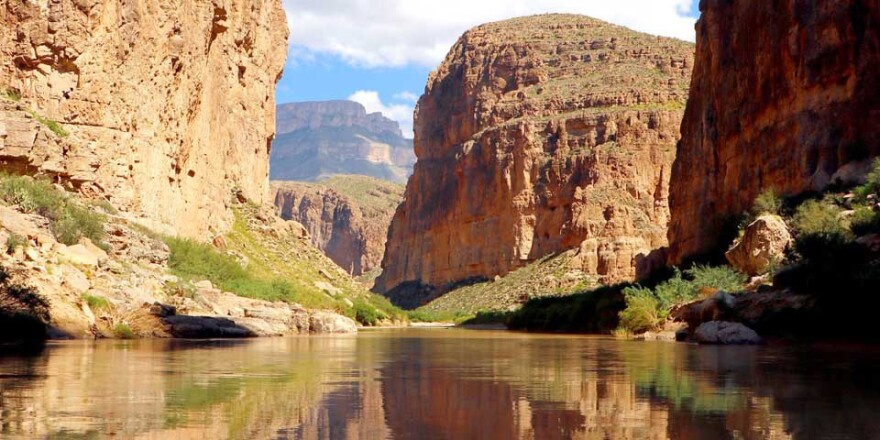From blood-red badlands to shining cliffs, stony summits to canyon labyrinths, geological diversity is part of Big Bend National Park's allure. And this diverse landscape was shaped by diverse tectonic forces.
One of those forces is known as the Laramide Orogeny. Geologists are taking a new look at this aspect of the Big Bend's past.
John Cannon is a UT-San Antonio geologist.
“When you talk about the Laramide,” Cannon said, “this mountain-building event has been argued about for a very long time now.”
The Laramide Orogeny raised up the Rocky Mountains. And geologically, it's an anomaly. Most mountains emerge at continental plate boundaries — think of the Himalayas, where the Indian subcontinent is colliding with Asia. But the Rockies are deep in the North American interior, hundreds of miles from a plate boundary.
Most geologists now believe the explanation is “flat-slab subduction.” Across tens of millions of years, the oceanic Farallon Plate drove itself deep beneath North America, squeezing and thickening the continental crust — including in Big Bend.
Dramatic evidence is found in the Sierra del Carmen, on Big Bend National Park's east side. Cannon and grad student Noah Klitus have been walking these mountains to measure the Laramide's impacts.
“In the United States Laramide,” Cannon said, “these sorts of calculations have been done in many places. But no one has done it in Big Bend yet. In a larger, broader sense, we're trying to figure out how Big Bend fits into the scheme of this continent-scale orogeny.”
The Laramide's effects played out here between 70 and 50 million years ago. In some cases, buried strata were thrust over younger rocks, or folded upon themselves. As they walk the mountains and canyons, Cannon and Klitus can see strata that were faulted by the orogeny's compressive force. And by measuring the inclination or angle of these faults, they can calculate the degree to which the continent here was thickened.
Even as these Big Bend Rockies rose, they were eroded by the elements. But the tectonic pressure continued. As eroded material gathered in surrounding basins, it too was thickened and faulted. Desert conditions make the impacts especially vivid for geologists, Cannon said.
“This is something that makes Big Bend at least to my knowledge somewhat unique for recording the magnitude of Laramide shortening,” he said. “Because of the dry climate, we have this great exposure of both the mountain and the basin, that we're able to look at shortening not just in the mountain belt but within the basin as well.”
The Laramide Orogeny is only one chapter in Big Bend's geological history. Powerful volcanic activity followed in the orogeny's wake, and the results are visible across our region – from the Chisos and Davis mountains to the Chinatis and Cornudas. And when the compression of the Laramide Orogeny ceased, western North America began to stretch out and thin. That continental “extension” is ongoing, and has shaped the landscapes of West Texas.
But hiking the Sierra del Carmen or Dead Horse Mountains, or floating Boquillas Canyon, a Big Bend traveler encounters the evidence of a singular upheaval — one that transformed this continent from Canada to Mexico.



